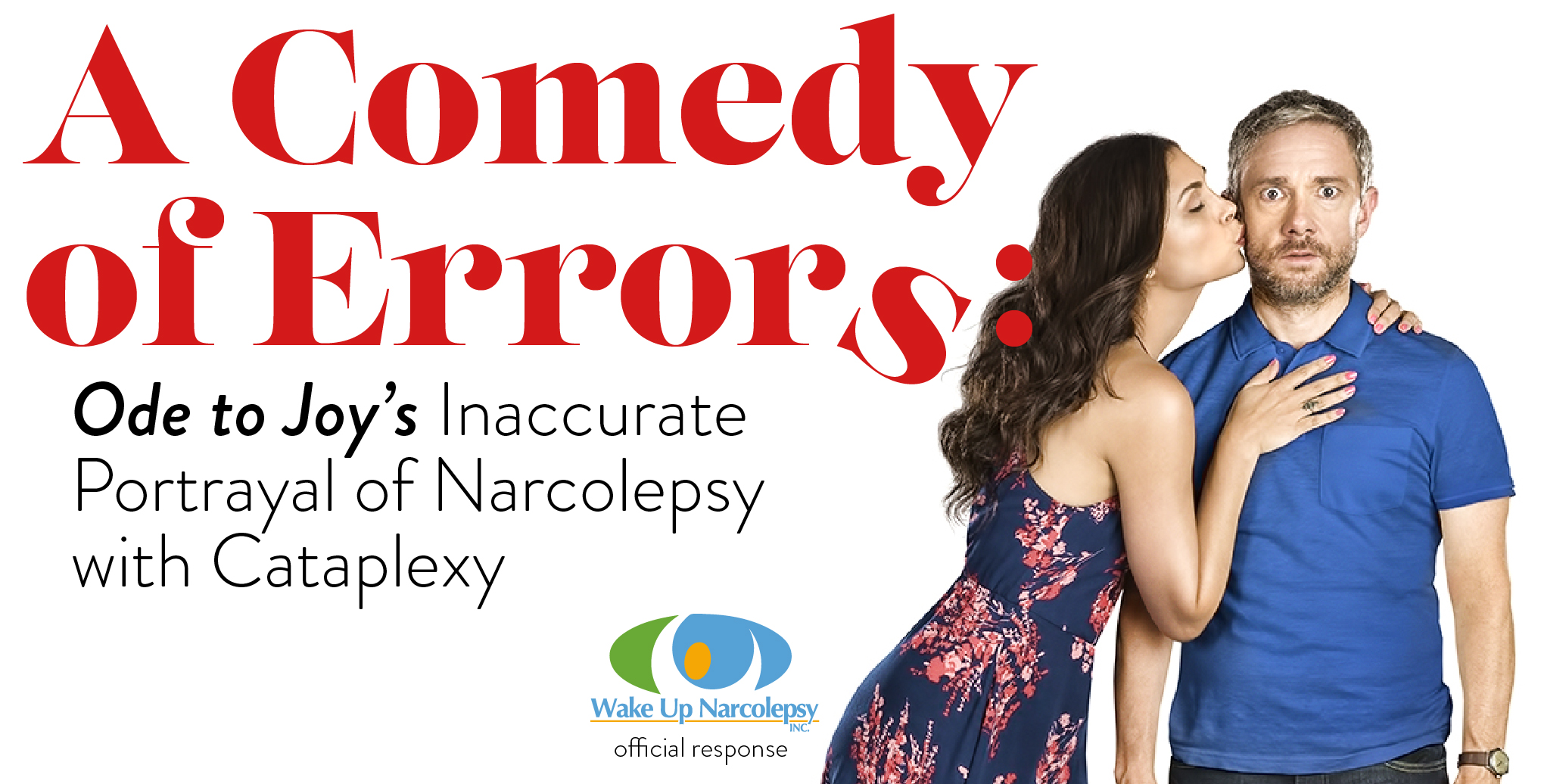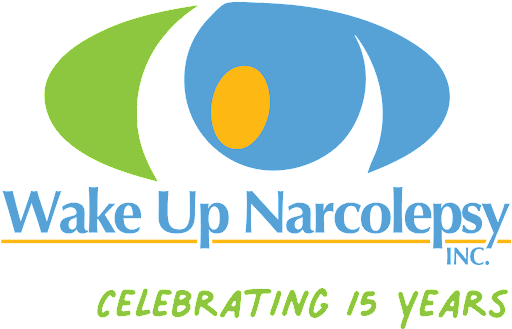
Aug 21 2019
A Comedy of Errors: Ode to Joy’s Inaccurate Portrayal of Narcolepsy with Cataplexy
h in News
Kelsey Biddle, a Wake Up Narcolepsy Board Member, shares WUN’s response to the movie Ode to Joy. Kelsey is a PWN who ran the Boston Marathon in 2019 to raise funds for narcolepsy research. She’s also an advocate who publishes her on narcolepsy…
When I learned that a movie featuring a character with narcolepsy was headed to theaters, I was hopeful and open-minded. Narcolepsy is a challenging disorder to diagnose, and people often live with symptoms for 10+ years before diagnosis. I hoped that by watching a movie about narcolepsy, viewers might be able to recognize their symptoms, or potentially those of a friend or family member. After watching the movie, I remain hopeful that this is possible. But overall, I was disappointed in the movie’s unrealistic, inaccurate portrayal of living with narcolepsy with cataplexy.
In the opening scene of Ode to Joy, a definition flashes on the screen: “Cataplexy is a neurological disorder that causes sudden attacks of muscle weakness.” The definition continues on the next screen: “It is triggered by strong emotions such as anger, surprise and fear. But mostly…joy.” This definition is both inaccurate and incomplete. As both a scientist and a person living with type 1 narcolepsy with cataplexy, I have studied the science of narcolepsy so that I can explain my condition to others in a clear and accurate way (with the ultimate goal of reducing stigma). Right off the bat, Ode to Joy portrays cataplexy as an isolated condition, failing to mention that it is a symptom of one type of narcolepsy (type 1).
Here’s what the movie misses: cataplexy without narcolepsy is extremely rare (it has only been documented in a couple of case reports), and defining it as a disorder by itself is misleading. Similarly, the movie’s definition of emotions that trigger cataplexy (anger, surprise, fear and joy) does not include humor or laughter – the most common cataplexy triggers according to research (laughing excitedly, making a sharp-minded remark, and telling a joke are the three most common triggers (Overeem, 2011, Sleep Medicine, PMID: 21145280)). Most people with narcolepsy know enough about cataplexy to recognize the inaccuracy of Ode to Joy’s definition, but the majority of moviegoers will take the definition at face value, and this concerns me.
I understand that Hollywood’s purpose is to entertain, but when movies like Ode to Joy fail to get the facts right, moviegoers come away with misperceptions that perpetuate the spread of misinformation about an already misunderstood disorder. Had narcolepsy experts been involved in the film’s production, perhaps a better definition would have been used. My suggestion: Cataplexy is one of the five hallmark symptoms of type 1 narcolepsy. It is the sudden uncontrollable onset of muscle paralysis or weakness, typically triggered by strong positive emotions, such as laughter. Not everyone with narcolepsy experiences cataplexy; narcolepsy without cataplexy is defined as type 2 narcolepsy. It’s not as catchy, but this definition is more accurate, and I believe accuracy should be a priority when making a film about a serious, highly stigmatized medical condition.
Beyond the opening scene, there was a mix of both accurate and painfully inaccurate portrayals of cataplexy. One particularly flawed example: after meeting the beautiful Francesca (Morena Baccarin), Charlie (Martin Freeman) stiffens like a board and falls backward down a flight of stairs onto concrete, which looks more like a trust fall exercise gone wrong than an episode of severe cataplexy. This fall lands him in the emergency room with a concussion. There, his doctor explains to Francesca that Charlie has narcolepsy, a serious condition (or “endearing quirk” according to his brother) that results from the death of his hypocretin neurons (yay for scientific accuracy!). In other scenes, Charlie slowly crumples to the ground—a more typical presentation of severe cataplexy. He also experiences mild knee-buckling, head droops, and jaw slackening that are very familiar to me, as I used to experience these forms of cataplexy before I started cataplexy-suppressing medications (more on this later).
Despite Charlie’s severe cataplexy, he appears to have no other symptoms of narcolepsy – he has little difficulty staying awake during the day and there’s no evidence of disrupted nighttime sleep. And Charlie never takes medication, which is highly unusual considering people with narcolepsy are highly reliant on sleep and wake-promoting medication to regulate their sleep-wake cycles. At one point, Charlie mentions trying Xyrem, a drug that can dramatically reduce cataplexy while simultaneously improving nighttime sleep and daytime wakefulness. Charlie, however, complains that the side effects of Xyrem were intolerable, so instead, he chooses to avoid emotional triggers (which I used to do pre-medication) and uses thumb tacks in his shoes to self-induce pain (which seems both absurd and dangerous). This, in particular, frustrated me. Yes, all medications have side effects, but I have a hard time understanding why Charlie did not experiment with other medications, such as SSRIs (which, at low doses, reduce cataplexy with a minimal side effect profile).
As I mentioned previously, cataplexy is just one symptom of type 1 narcolepsy and, for many adults living with narcolepsy, it’s not even the most concerning symptom. (It’s worth noting that cataplexy often improves over time and is likely to be more severe in a four-year-old child than a middle-aged man.) The other symptoms of narcolepsy include highly disrupted nighttime sleep, overwhelming daytime drowsiness, hallucinations, sleep paralysis, brain fog, poor concentration, and disorienting episodes of automatic behavior (involuntary behavior that is performed without conscious knowledge). For me personally, these symptoms were far more life-altering than cataplexy, especially in the context of dating and relationships (imagine dating a stranger with the knowledge that you don’t always have full control over your body, and that sleepiness and brain fog could impair your ability to make decisions). Thanks to the two cataplexy-suppressing medications prescribed by my neurologist, I haven’t experienced an episode of cataplexy in close to a year. Overall, I felt that Charlie’s experience with narcolepsy was atypical and not representative of the average narcolepsy case. His dramatic cataplexy looked a lot more like what someone experiences in the years pre-diagnosis, rather than what you’d expect in a middle-aged man who’d been living with narcolepsy for over half of his life.
Navigating dating and relationships with narcolepsy can be challenging – when and how do you disclose your diagnosis? How do you find the time to date when you’re already so busy balancing work/school and prioritizing your health? What if you experience cataplexy during sex (orgasm is a trigger for some)? Charlie is clearly hesitant to date, for fear that falling for someone romantically (pun intended) might trigger a full-body collapse. As the film’s tagline says, “He’s never been happier, and that’s the problem.” From my perspective, happiness is not Charlie’s problem; his problem is that his symptoms are inadequately treated. What the film fails to mention is that with some tweaking of Charlie’s suspiciously minimal medication regimen, he has the potential to live a life full of love, laughter and joy. As a person living with narcolepsy, I am fully aware of the many ironies of narcolepsy and cataplexy. My personal favorite: you can’t stay awake during the day, yet you also can’t sleep at night, and when you try to chuckle at the irony, you may collapse to the ground (ha!).
As amusing as these concepts are to some (including Francesca, who often laughs at Charlie’s condition), I don’t think it’s appropriate to make a comedy that pokes fun at the reality of living with a serious neurological disorder. The fundamental flaw of this film is the director’s decision to tell the story as a comedy rather than a drama. I wish the film focused first on accuracy and empathy, then later comedy. In the words of Frank Scheck, a Hollywood Reporter, “Ode to Joy fails to live up to its title by attempting to wring comic mileage from a medical condition that sufferers probably don’t find very funny.”
In spite of all my issues with the film, I encourage people to watch it. Here’s why:
- Someone might be just curious enough after watching the film to google “cataplexy,” which could result in them learning more about narcolepsy and its other symptoms.
- It’s a conversation starter. If you are a Person With Narcolepsy (PWN) or a family member of a PWN, invite your friends over to watch the movie and discuss your reactions (Project Sleep has a great discussion guide for this purpose: include link).
- After watching Ode to Joy, you can post a review online. If you enjoy the movie, try to articulate why, and if you fell more into my camp, let the producers know what bothered you.
And if you’d like to learn more about narcolepsy, click here to learn more about the disease, or here to learn more about my first year living with type 1 narcolepsy with cataplexy.
